

At Colorado State University, we continue to evaluate herbaceous perennial performance at our Perennial Demonstration Teaching, Research Outreach Garden. This garden was moved to its present location north of the University Center for the Arts in 2017 from the former demonstration garden at the Plant Environmental Research Center.
Plants in this garden are planted in more traditional perennial borders and evaluated yearly for their hardiness and landscape qualities. The following ten herbaceous perennials are superior in their performance over many years. They are definitely superior and adaptable to our Colorado climate and should be planted more in our Colorado gardens.
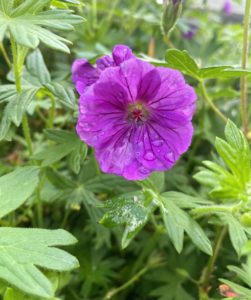
1. Geranium sanguineum x psilostemon ‘Tiny Monster’ (Tiny Monster Geranium) obtained from EuroAmerican
The ‘Tiny Monster’ has five-petalled, beautiful magenta pink flowers with green foliage that turns flushed purple or bronze in the fall. Planted in 2003, the ‘Tiny Monster’ Cranesbill looks wonderful and continues to bloom from late May to the first frost of the season. The flowers remain vibrant and proceed to draw the attention of our precious bees. Our care of this Geranium sanguineum x Geranium psilostemon includes cutting back wilted flowers to about 2 to 3 inches off of the base to promote new growth, and regular watering. For the best performance, the ‘Tiny Monster’ was planted in partial shade to full sun.
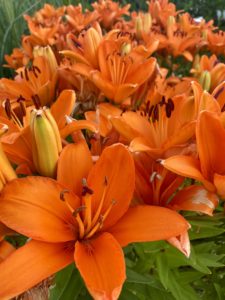
2. Lilium asiatic ‘Tiny Dino’ (Tiny Dino Lily) obtained from Skagit Gardens
The beloved ‘Tiny Dino’ Lily was planted at the perennial demonstration garden in 2010 and its exceptional blooms have repeatedly astonished many. Having a maximum height of 6 inches and having upward facing, large orange petals that contrast with its deep green foliage, this cultivar provides a great accent to our garden. The ‘Tiny Dino’ Lily flowers in early to mid-summer and requires partial shade to full sun. To maintain this plant, we deadhead the flowers when they are spent, water them regularly, and divide the bulbs every six to eight years to prevent overcrowding.
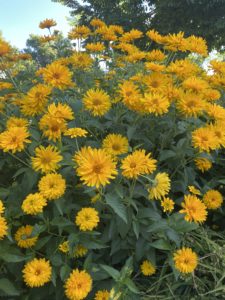
3. Heliopsis helianthoides ‘Incomparabilis’ (False Sunflower) obtained from Springbrook Gardens
The ‘Incomparabilis’ is one of the longest blooming perennials in our garden ever since 1980. Composed of bright, golden yellow double daisy-like flowers that emerge from deep green foliage, this plant creates a magnificent focal point in the landscape. Both bees and butterflies find it hard to resist this plant. This cultivar of Heliopsis helianthoides blooms during the summer and early fall, requiring full sun. To ensure the longevity of this plant, we keep it on a regular watering schedule and deadhead the blooms.

4. Acanthus longifolius (Bear’s Breeches) obtained from Denver Botanic Gardens
Since 1996, Bear’s Breeches has added a remarkable touch to our perennial demonstration garden with its medium green cutout leaves resembling spineless thistles, and its beautiful pale purple and white flowers. Bear’s Breeches is a unique, eye-catching plant blooming from late June to early September in well-drained soil and full sun. Throughout the decades, this planthas prevailed in our garden. For upkeep of the Bear’s Breeches, we water regularly and deadhead the flowers. Although, we may sometimes keep the spent blooms throughout the winter for a rustic look.

5. Astilbe x japonica ‘Peach Blossom’ (Peach Blossom False Spirea) obtained from Bluestone Perennials
The ‘Peach Blossom’ False Spirea has lived in our garden since 2002 and fabricates a richness to our perennial demonstration garden with its luscious green leaves and its whimsical, peach-pink flowers. This two-foot-tall plant is not only deer resistant, but it also attracts hummingbirds. The ‘Peach Blossom’ requires full shade to partial sun so that it may bloom early to mid-summer. For longevity, we do not cut back this cultivar once it’s done blooming so that it may withstand the winter frost. However, we do prune this plant in early spring to promote growth.

6. Echinacea purpurea ‘Primadonna Deep Rose’ (Primadonna Deep Rose Coneflower) obtained from Benary
Having been in the trial garden since 2004, ‘Primadonna Deep Rose’ resumes being dazzling with its superior central cone and deep rose florets. Being a low-maintenance plant since Echinacea purpurea can be left to seed,‘Primadonna Deep Rose’ is an ideal perennial to plant. Blooming from late spring to late summer, it attracts birds and butterflies to the garden and is also deer resistant. This plant provides a graceful look to the garden and requires full sun. In the gardens, we use moderate watering to keep the plant healthy.

7. Leucanthemum x superbum (Shasta Daisy) obtained from Inter-State Nursery
This Shasta Daisy, planted in 1981, has massive solitary, white flowers that sit on top of tall dark green stems. Blooming each year, the individual flowers contain a yellow disk in the center and are composed of ray florets. Reaching a height of 3 feet tall, this cultivar may need some stalking to keep it upright. This timeless beauty blooms in the summer and requires full sun to partial shade. Be sure to plant in soils with good drainage and to water regularly. To promote new growth, we deadhead as needed.
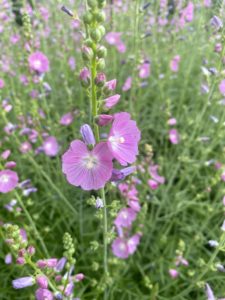
8. Sidalcea malviflora ‘Party Girl’ (Party Girl Prairie Mallow) obtained from Paulino Gardens
Growing about 3 feet tall and producing terminal racemes of pink flowers, ‘Party Girl’ never ceases to impress with its invigorating beauty since 1992. This miniature hollyhock has green, rounded basal leaves that lead up to stems with finger-like leaves. The time of bloom for this marvelous plant is from July to October. In the perennial demonstration garden, ‘Party Girl’ has been planted with access to full sun and is regularly watered. The first blooms are deadheaded to stimulate new flowers.
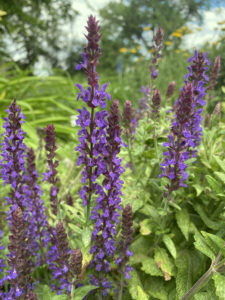
9. Salvia nemorosa ‘New Dimension Blue’ (New Dimension Blue Salvia) obtained from Kieft Seeds
The ‘New Dimension Blue’ was planted in 2010 and has deep green leaves with rich purple flowers. This herbaceous plant grows upright and reaches a height of about 12 inches.‘New Dimension Blue’ is aromatic to the touch and can attract bees, butterflies, and hummingbirds. The time of bloom is June through September and this plant requires full sun. Once the flowers fade, we deadhead the blooms to encourage new growth.

10. Lavandula species ‘Oxford Gem’ (Oxford Gem Lavender) obtained from Blooms of Bressingham
Since 2011, ‘Oxford Gem’ continues to provide gorgeous, purple blooms in the summertime. Hard to miss with its welcoming fragrance, the flowers on this plant are whorled around a spike and the leaves are light green and covered with tiny hairs. Butterflies and bees are frequent visitors of this plant. Although this cultivar of the Lavandula species is a drought tolerant plant, we keep it on a regular watering schedule for enhanced quality. For overwintering, well-drained soil is a must. ‘Oxford Gem’ also requires full sun for the best performance.










